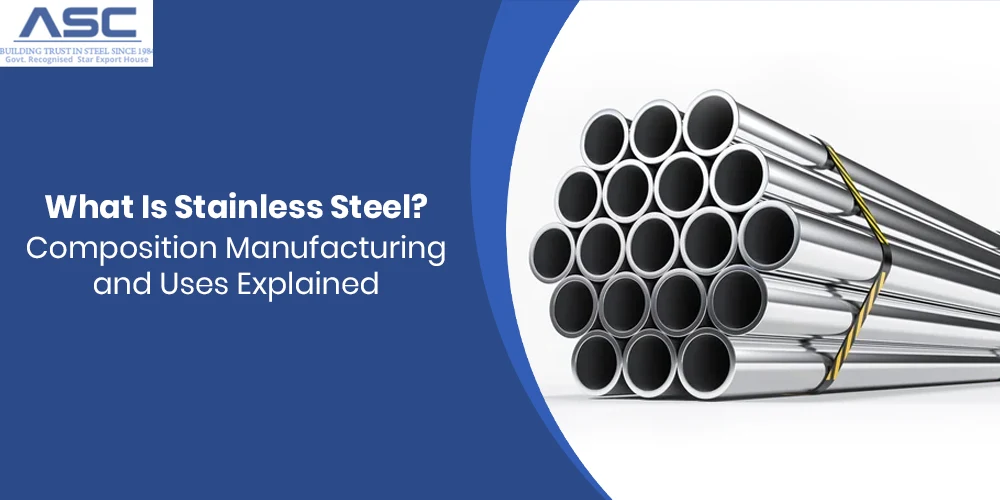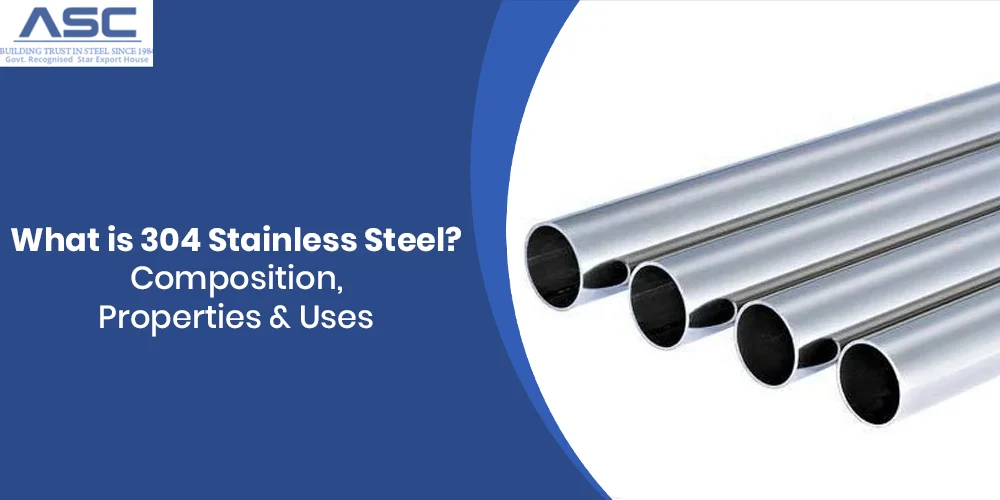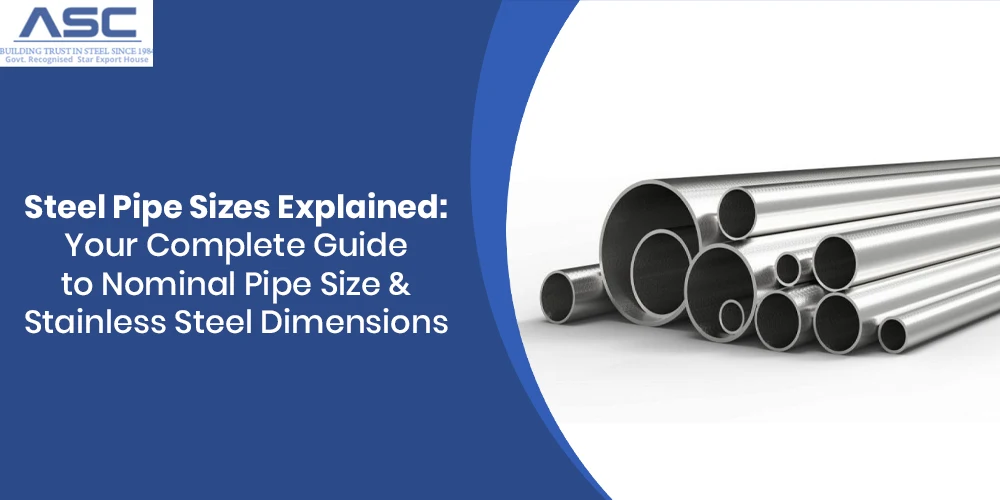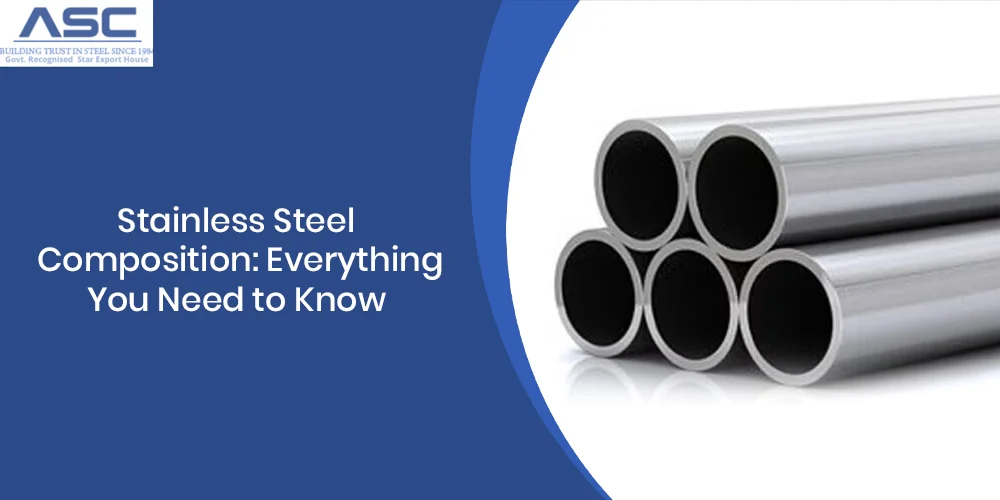What Is Stainless Steel? Composition, Manufacturing, and Uses Explained
by AMC
Posted on May 21, 2025 at 05:01 PM

You can find stainless steel almost everywhere. It's a material that's truly everywhere shaping modern life. Today we're going to talk about what is stainless steel. We'll look into its makeup, how it's made and where it's used. Amardeep Steel Centre invites you to learn more about this remarkable material.
What is Stainless Steel?
So, what is stainless steel? It’s a special kind of steel. Think of it as a precise mix. Iron and chromium are the main parts. Chromium is very important here. Why? Chromium gives stainless steel its power against rust and corrosion. This makes it last. It stays strong. It also looks good. That is why so many products use stainless steel.
What is Stainless Steel Made of?
Let's discuss what is stainless steel made of. Chromium is the key to its "stainless" nature. All stainless steel has at least 10.5% chromium. Air touches the steel. The chromium then forms a thin shield. You can’t see it. This shield stops rust. It stops corrosion. But what is the composition of stainless steel beyond just iron and chromium? Other things are added. Nickel is one. Carbon, manganese, and molybdenum are others. Nickel makes it tougher. It also makes it easier to shape. Molybdenum adds more rust protection. This is true even in harsh places. Carbon adds strength. These additions help make stainless steel right for each job.
Types of Stainless Steel
The ingredients change. So, there isn’t just one kind of stainless steel. Different mixes make different families. These are called grades of stainless steel. Each grade does something special. Some are good for welding. Others fight rust very hard. Some are very strong. Knowing these types helps. It helps choose the right stainless steel. The exact composition of stainless steel decides its type. It also decides what it’s best for.
How Is Stainless Steel Made?
Making stainless steel needs care. It’s a step-by-step process. First, they melt the basic materials. Often, this includes old stainless steel. This is good because it’s 100% recyclable. A big electric furnace does the melting. This takes hours. Next, they remove things they don’t want. Too much carbon is one example. Methods like AOD (Argon Oxygen Decarburization) help here.
Then, the liquid steel is adjusted. They check its temperature. They check its chemical mix. They make sure it’s all correct. Then, they cast the liquid stainless steel. It’s poured into shapes. These could be blooms, billets, or slabs. These shapes cool down.
These basic shapes get more work. Hot rolling often comes next. The hot steel goes through big rollers. This makes it roughly the right size. For a smoother look or exact sizes, they might use cold rolling. Heat treatment is also key. Annealing is a common one. This means heating and cooling the stainless steel very carefully. This makes it softer. It relieves stress. Its inside structure gets better.
They also clean the surface. Scale or dirt is removed. A process called pickling, using an acid bath, often works. This step is important for rust resistance. Finally, they cut the stainless steel. It’s cut to the needed sizes and shapes. It might also get a special finish. This could be matte. It could be a mirror shine. After all this, the stainless steel is ready for its many uses.
Why the Composition of Stainless Steel Matters
We talked about the composition of stainless steel. Why is it so vital? That specific mix of elements directly controls how the stainless steel acts. Chromium, for example. How much is in there decides how well it stops rust. Nickel helps with shaping. It also helps with how it works in different temperatures. Molybdenum gives extra defense. It protects against certain rust, like from salt.
Even tiny changes to the mix can make a big difference. It can change the steel's strength. It can change how easy it is to weld. It can even change if it’s magnetic. That’s why we at Amardeep Steel Centre know that understanding the composition of stainless steel is so important. It helps us get you the perfect material. Is it for hard industrial work? Or something for looks? The composition makes it right.
Common Uses of Stainless Steel
Stainless steel does so many things. You find it almost everywhere. Your kitchen has it. Cutlery, pots, pans, sinks, ovens. It’s clean. It’s easy to wash. It’s great for food. Buildings and designs use stainless steel. You see it on building exteriors, supports, and railings. It looks modern. It is strong.
Doctors and hospitals use stainless steel a lot. Surgical tools are made from it. Medical implants too. It’s sterile. It’s safe for the body. Cars use stainless steel. Exhaust systems are one example. Big industries need it. It’s in pipes, tanks, and machines. Chemical plants use it. Food factories use it. Oil and gas operations use it. It can handle tough conditions. This makes stainless steel a top pick.
Conclusion
So, let's sum up: what is stainless steel? It’s a great metal mix. It beats rust. It’s strong. It looks good. When you know what is stainless steel made of, you see how useful it is. You see how its ingredients change what it can do. From melting the raw stuff to the final careful polish, making stainless steel creates a quality product. And this product is used in so many ways.
Stainless steel helps build and run our world. Are you thinking about stainless steel for a project? Amardeep Steel Centre can help. We offer good materials. We offer the knowledge to go with them.
Frequently Asked Questions (FAQs)
What mainly gives stainless steel its 'stainless' quality?
Chromium mostly gives stainless steel its 'stainless' power. It needs at least 10.5% chromium. This forms a shield that stops rust.
Is all stainless steel the same?
No, stainless steel is not all one thing. Many grades exist. They differ because of their chemical composition of stainless steel. Each grade has its own plus points.
What are the main elements in the composition of stainless steel?
Iron and chromium are the main parts of the composition of stainless steel. Other common elements like nickel, molybdenum, manganese, silicon, and carbon are added. These make it better for certain jobs. Exactly what is the composition of stainless steel changes with each grade.
Can stainless steel be recycled?
Yes, for sure. Stainless steel is 100% recyclable. Much new stainless steel starts as old, recycled scrap. This is good for our planet.
Why is it important to understand what stainless steel is made of?
Knowing what is stainless steel made of is very important. What’s inside decides its strength. It decides how well it fights rust. This knowledge helps choose the best stainless steel for any task. That way, it works well and lasts.

304 Stainless Steel: Everything You Need to Know – Simple Guide
Ever found yourself wondering what gives your kitchen sink that lasting shine, or what tough material keeps those big industrial pipes from turning into rust buckets?

